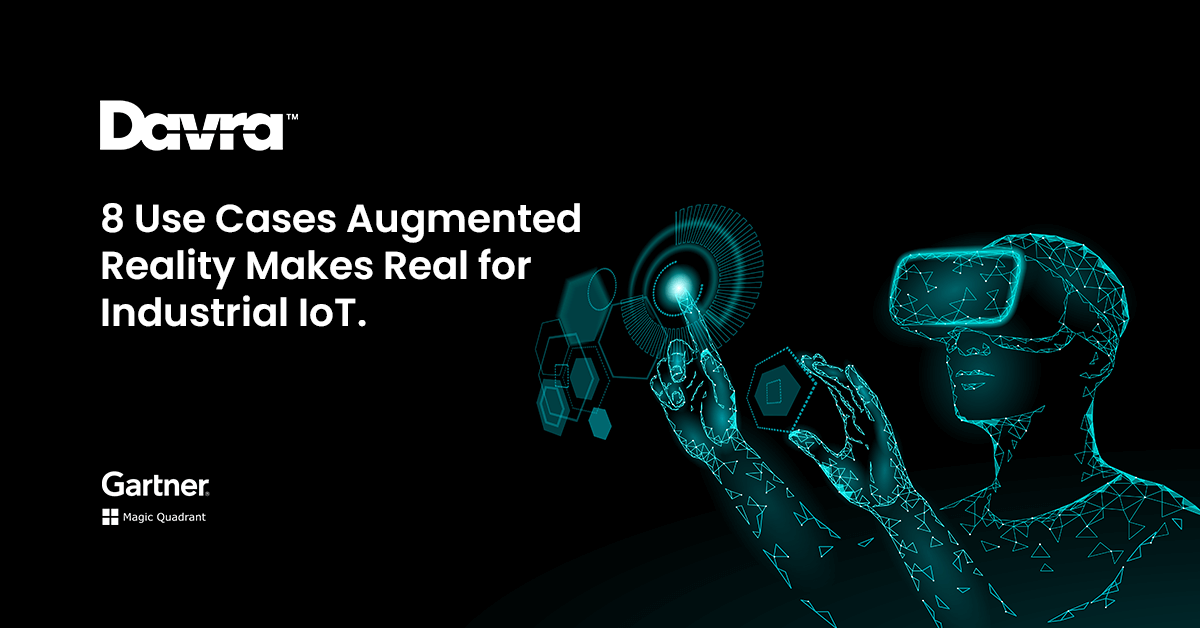IoT in Healthcare Use Cases eBook
Download Your Free IoT in Healthcare Use Cases eBook
Read More


As business intelligence gains complexity, the difficulty of interacting with data and communicating ideas also increases. Augmented reality is an ideal overlay for the often-tortuous network architectures and bewilderingly complex systems that characterize the industrial Internet of Things.
Does the idea of donning a headset and using it to control your smart city still sound a bit too futuristically far-fetched? Here are eight ways the IoT’s rosy future is already shaping up through AR-tinted lenses.
The real estate sector regularly uses AR to make properties more accessible, so why shouldn’t other industries? With the IoT’s many surveillance integrations and massive bandwidth, the frameworks are already in place for remote compliance officers to watch operations from afar.
In addition to facilitating basic walkthroughs, IoT tools with AR overlays might make it easier to view critical operating information within the proper context. For instance, a heads-up display could use visual alert icons to direct onsite personnel to faulty equipment or help them navigate situational hazards.
Augmented reality doesn’t discriminate. You can connect to any data source as long as it provides the right information and contextualized mappings to your headset, phone or other devices.
Imagine that your employees need help with complex jobs, such as fixing network gateways, inspecting controllers or calibrating environmental sensors. With the IoT and AR, you can provide the necessary oversight without setting foot on the production floor.
AR promotes human guidance regardless of location. This capacity proves particularly relevant in the business-to-business service field. AR hardware that facilitates hands-free IoT connections during repairs could be a lifeline to vital reference sources, such as live diagnostic feeds, technical manuals, coworkers and help desks.
In many manufacturing fields, automation is the backbone of the fabrication process. With circuit boards, for instance, each product is composed of hundreds or thousands of highly distinct, tiny parts. Further compounding issues, these components demand micrometer-level precision and delicate, clean-room grade handling.
Today, pick-and-place machines are among the most common answers to such manufacturing hurdles. Nonetheless, these solutions bear limitations, such as only accommodating so many kinds of components simultaneously and requiring manual loading.
Pick-and-place, robotic arm manufacturing and other automated tasks work better with the IoT and AR. Humans can identify real-world objects, such as part reels or supply containers, with AR tags that enable computer vision software to detect their presence. From there, the IoT can take over and kick off the actuator-powered manufacturing process.
Video Link: https://www.youtube.com/watch?v=X9kGWa5ey7Q
One of the historical challenges of fleet management lies in accurately visualizing the spatial relationships between vehicles and other assets. A driver’s position can change at any moment, and so can road conditions. Although modern mapping tools make it a bit easier to keep things in perspective, fleet managers may face a disconnect: How do the dots on the screen relate to real-world assets?
Augmented reality headsets make the numbers from your mobile Internet of Things more immersive. By letting you interact with data streams and model assets in simulated 3D space, AR fleet management dashboards could give you a more accurate feel for key travel factors. Some companies have even proposed equipping trucks with augmented windshields that keep commercial operators focused on traffic data, weather alerts and cargo status readouts.
Video Link: https://m.youtube.com/watch?v=ArBGhfcCvjc
Performing maintenance is another interesting application. Not all drivers are mechanics. With AR glasses and phone apps, however, they can connect to their vehicles’ onboard IoT networks, find problems and get help from home base.
Multiple companies have demonstrated or marketed connected AR safety helmets, with some even raising funding to the tune of tens of millions of dollars. These devices perform a range of tasks on top of offering physical protection, such as:
• Letting workers access task lists and job orders on the fly
• Combatting common safety risks by improving wearer awareness,
• Surveilling workers for management purposes,
• Warning machinery operators when they’re in dangerous areas or about to cause accidents involving other people, and
• Monitoring wearer vital signs to ensure rapid responses to events such as overheating, slip-and-falls, traumas or electrical shocks.
Shipping and handling take time, but AR stands to make these processes faster. From helping workers find items to telling them where to store incoming parcels, the AR and IoT hardware are making common logistics tasks a bit more logical.
QR codes are ubiquitous in modern warehousing operations. IoT implementations don’t need much modification to take advantage of the technology since many leading application enablement platforms already support tasks like computer vision. Combining these systems with AR could make the IoT feel more tangible and present.
Tired of receiving crushed, soggy or otherwise abused packages? The AR and the IoT may soon make such events things of the past. Shipping companies are experimenting with ideas like giving logistics workers smart clothing that can help them identify package contents.
How would this work? Imagine that a consumer is awaiting a fragile shipment of antiques from their dear granny. A parcel handler at the warehouse is about to fling the box into a truck. Just then, their smart glove buzzes to tell them that the item they’ve picked up requires special care. The package gets loaded safely, and the recipient can enjoy it without experiencing the tragic disappointment of discovering the contents destroyed.
Such technologies might also improve the level of fine-grained detail offered by last-mile order fulfillment enterprises. Although it’s up to the shipper how much process information the customer sees, knowing exactly when a package changes hands can establish a more robust chain of custody. IoT-linked AR wearables may hold the key to overhead-free object tracking.
It’s easier for people to retain acquired knowledge when their senses are fully engaged in the material at hand. AR gets you halfway there by peppering your field of vision with handy clues. Could mixing in the IoT help trainees complete their journeys toward workplace wisdom?
Augmented reality training is nothing new. Companies have long used it as an alternative to exposing untested workers to hazardous conditions.
The IoT plays a part by making continuing and theoretical employee education more relevant to real-world business environments and concerns. For instance, companies might take cues from the training ships used by navies the world over — such as by running facility simulations for more realistic emergency response education.
The Internet of Things evolves unapologetically fast. To match the pace, you’ll need IoT frameworks that don’t balk at custom implementations.
The Davra platform gives you the integrations you need to use any AR hardware and an API built on modern web technologies. Get better acquainted with a Gartner-recognized pacesetter by trying a demo.
Brian McGlynn, Davra, COO
Download Your Free IoT in Healthcare Use Cases eBook

Davra IoT is the only Industrial IoT Platform Available on AWS Marketplace
Read MoreThe Collaboration of Humans & Robots Has Created The Cobot
Read More